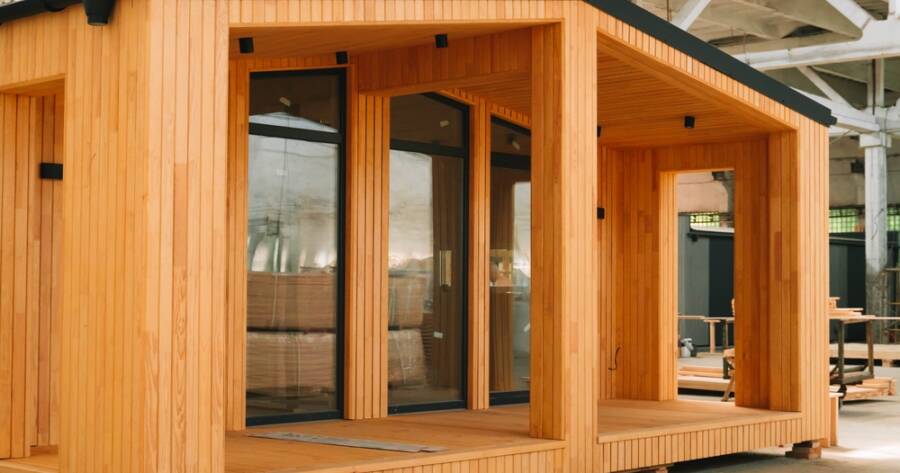Purchasing a modular home can be an exciting yet complex endeavor. Modular homes offer a customizable and often cost-effective alternative to traditional homes, but the process involves many factors that require careful consideration. By understanding the key steps involved, you can approach the purchase with confidence, ensuring you make informed decisions tailored to your needs and circumstances. This guide will outline essential aspects to consider when purchasing a modular home, helping you navigate the journey with greater ease and clarity.
Understanding Modular Homes: A Brief Overview
Before diving into the purchase process, it’s essential to understand what modular homes are and how they differ from other housing options. Modular homes are built in sections (or modules) in a factory setting and transported to the site for assembly.
Unlike manufactured homes, they are placed on permanent foundations and adhere to local building codes, making them a viable option for various buyers. These homes can be highly customizable, but their quality, pricing, and timeline may vary depending on the manufacturer and builder.
Step 1: Assess Your Needs and Budget
One of the first steps in purchasing a modular home is evaluating your personal needs and financial situation. Consider the following:
- Lifestyle Needs: Think about the size, layout, and features that would best suit your household. Modular homes can accommodate various styles, from simple two-bedroom layouts to sprawling multi-level designs.
- Budget Planning: Research the costs involved, including the base price of the home, site preparation, transportation, installation, and any additional customizations. Keep in mind that unforeseen expenses, such as permits or utility hookups, can arise.
- Financing Options: Modular homes may qualify for traditional home loans or construction loans. Consult with lenders experienced in modular home financing to explore your options.
By taking time to clarify your needs and establish a realistic budget, you’ll have a stronger foundation for the steps ahead.
Step 2: Research Modular Home Builders
Not all modular home manufacturers and builders are created equal. Conduct thorough research to identify reputable companies that align with your vision and budget.
- Reviews and References: Look for reviews from previous buyers and ask the builder for references. Speaking with past clients can provide valuable insights into the builder’s reliability, communication, and craftsmanship.
- Portfolio and Customization Options: Review the builder’s portfolio to ensure they can deliver the style and features you’re seeking. Many companies offer pre-designed models as well as fully customizable options.
- Certifications and Compliance: Confirm that the builder adheres to local building codes and has the necessary certifications.
Taking time to vet builders carefully can save you from potential headaches down the road.
Step 3: Secure Land and Permits
Before purchasing a modular home, you need a suitable plot of land where the home will be placed. This step involves several key considerations:
- Land Selection: Choose a location that meets your lifestyle needs, whether it’s proximity to schools and work or access to recreational areas. Evaluate the land’s suitability for modular construction, such as its topography and soil quality.
- Zoning and Permits: Ensure the land is zoned for residential use and modular homes. Depending on local regulations, you may need permits for site preparation, utility installation, and home assembly.
- Site Preparation: Clearing and grading the land, as well as ensuring access for delivery trucks, may require additional time and cost.
Without proper planning, land and permit issues can delay your project significantly.
Step 4: Finalize the Design and Specifications
Once you’ve chosen a builder and secured land, it’s time to work on the design and specifications of your modular home.
- Customization Options: Many modular builders offer a wide range of customization options, allowing you to choose layouts, finishes, and energy-efficient upgrades. Be sure to discuss these options in detail to ensure the home reflects your preferences.
- Floor Plans: Carefully review floor plans to ensure they meet your current and future needs. Consider storage, room sizes, and flow between spaces.
- Materials and Features: Ask about the materials used in construction and any available warranties. Durable, high-quality materials can enhance the home’s longevity and value.
Having a clear vision of your design will help streamline the building process.
Step 5: Plan for Delivery and Installation
Delivery and installation are critical phases in the modular home process. Coordination and preparation are essential to ensure a smooth transition from factory to site.
- Transportation Logistics: Work with your builder to plan for the delivery of your home. Ensure the site is accessible for delivery trucks and cranes.
- Foundation Installation: Modular homes require a solid foundation, whether it’s a basement, crawlspace, or slab. Verify that the foundation is completed before the modules arrive.
- On-Site Assembly: Once delivered, the modules will be assembled and secured on the foundation. This process typically takes a few days to a few weeks, depending on the complexity of the home.
Monitoring the installation process can help ensure it meets your expectations.
Step 6: Final Inspections and Move-In
Before moving into your new modular home, several final steps are necessary:
- Inspections: Arrange for a professional inspection to confirm that the home meets all safety and building standards. Address any issues or deficiencies with the builder.
- Utility Connections: Ensure utilities such as water, electricity, and gas are connected and functional.
- Walkthrough: Conduct a final walkthrough with your builder to review the finished home and verify that it meets your agreed-upon specifications.
Once these steps are complete, you can confidently settle into your new home.
Learn More Today!
Purchasing a modular home is a multifaceted process, but with careful planning and informed decision-making, it can be a rewarding experience. By assessing your needs, researching builders, securing land, and overseeing each step—from design to installation—you can minimize potential challenges and maximize your satisfaction with the final product. While every journey is unique, staying proactive and detail-oriented can help ensure your modular home becomes a lasting and comfortable investment in your future.
